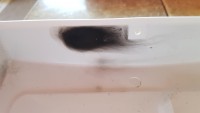Welcome,
I have had problems with the Kospel Twister 3.5 kW water heater for a long time.
The device usually did not heat up in the most severe frosts and low water pressure. For the last 2 weeks it has hardly been heated at all. After deaeration, it could literally last several hours. For several days, however, it does not heat up at all. I was venting, cleaning the filter, checking if the voltage was coming, but to no avail. What else could be wrong?
I have had problems with the Kospel Twister 3.5 kW water heater for a long time.
The device usually did not heat up in the most severe frosts and low water pressure. For the last 2 weeks it has hardly been heated at all. After deaeration, it could literally last several hours. For several days, however, it does not heat up at all. I was venting, cleaning the filter, checking if the voltage was coming, but to no avail. What else could be wrong?







